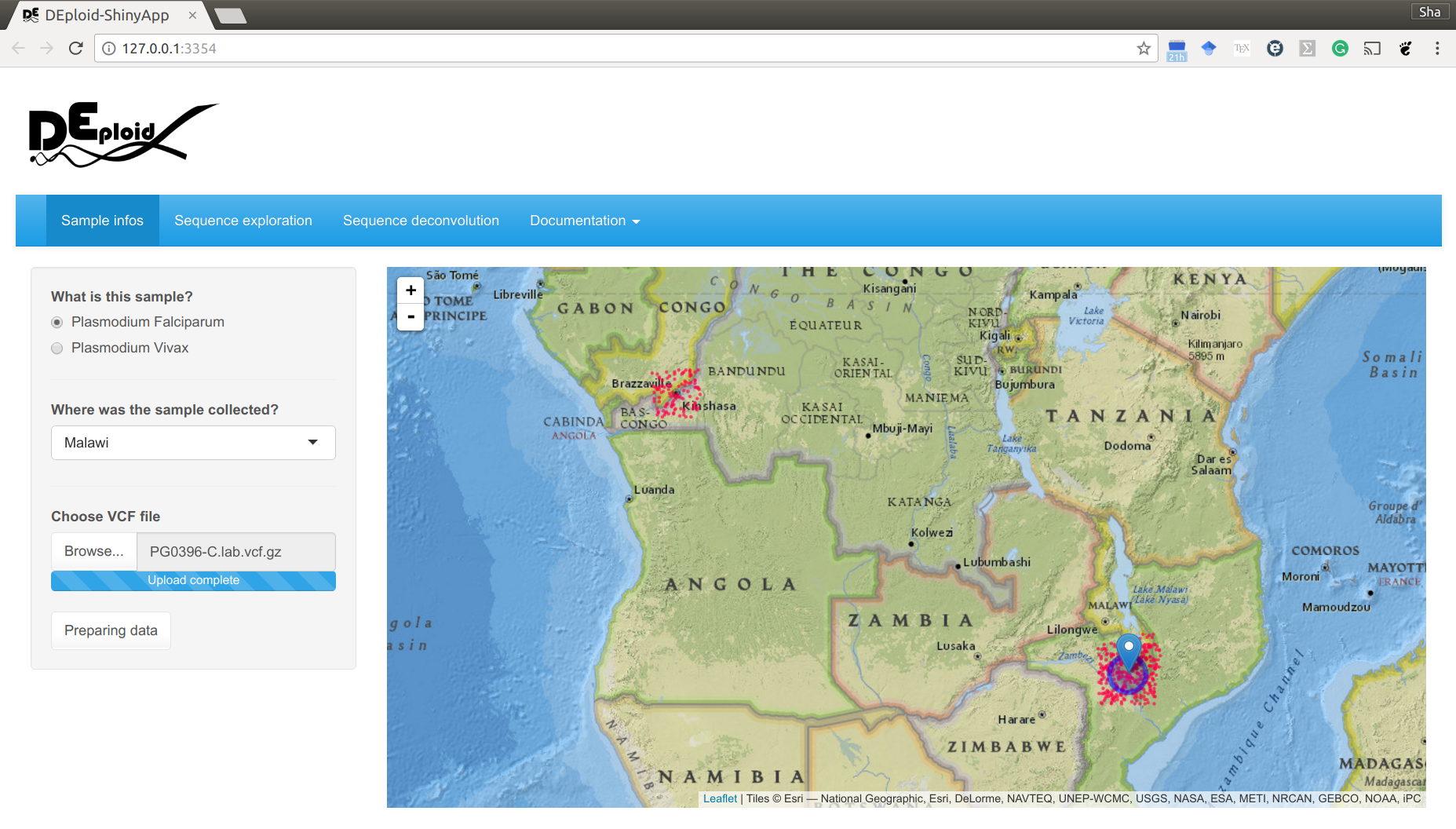Mixed infection

Individual malaria infections can carry multiple strains of Plasmodium falciparum with varying levels of relatedness. Applying DEploid to the Pf3k data set, we find evidence of mixed infections propagated over successive infection cycles. By leveraging data from the Malaria Atlas Project, we find that prevalence correlates with both the rate of mixed infection and the level of within sample relateness.

Example IBD profiles in mixed infections. Plots showing the ALT versus REF plots (left hand side) and inferred IBD profiles along the genome for five strains of differing composition. From top to bottom: A dual infection of highly related strains (ρ = 0.84); a dual infection of two sibling strains (ρ = 0.6); a triple infection of three sibling strains (note the absence of stretches without IBD); a triple infection of two related strains and one unrelated strain; and a triple infection of three unrelated strains. The numbers below the sample IDs indicate the average pairwise IBD, r, and the mean length of IBD segments, l, respectively.
Zhu, J. S., J. A. Hendry, J. Almagro-Garcia, R. D. Pearson, R. Amato, A. Miles, D. J. Weiss, T. C. D. Lucas, M. Nguyen, P. W. Gething, D. Kwiatkowski, G. McVean, and for the Pf3k Project. (2018) The origins and relatedness structure of mixed infections vary with local prevalence of P. falciparum malaria. biorxiv, doi: https://doi.org/10.1101/387266.
.@shajoezhu nicely shows relationship between transmission intensity and relatedness of strains in mixed infections of Pf malaria at #GEM18 pic.twitter.com/wFk2Bsngz8
— Alex Perkins (@TAlexPerkins) June 12, 2018